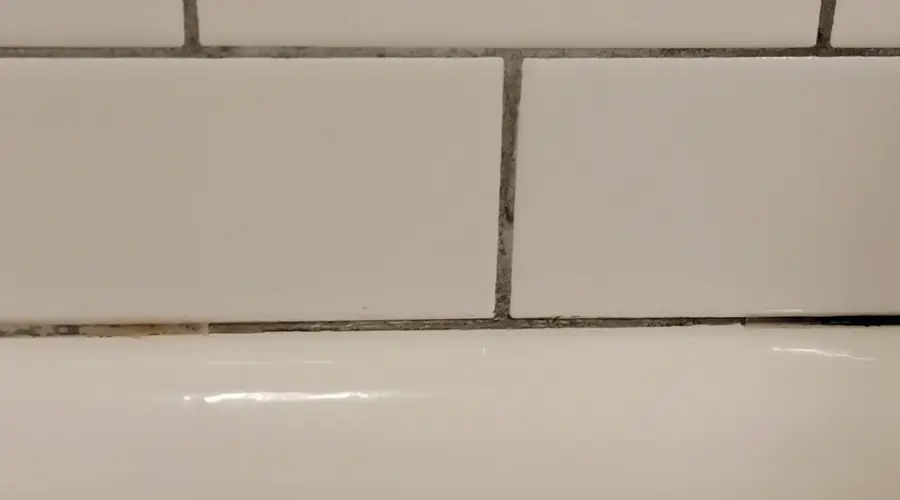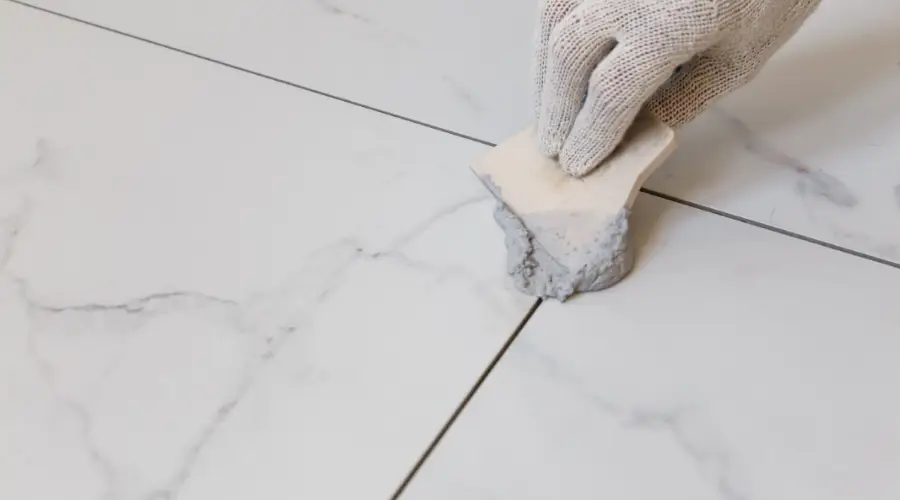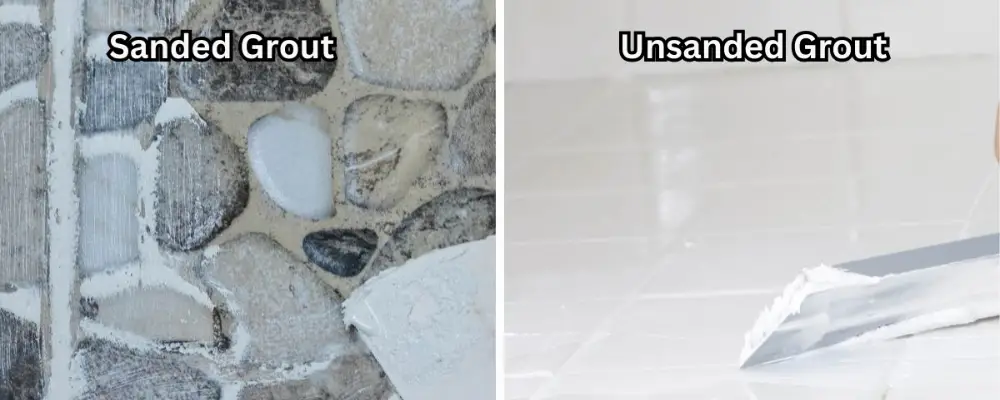You are in the middle of picking your favourite tile and preferred tiles for your dream project, but you have questions regarding the construction process.
There are some aspects of the construction process that you take for granted and do not put much thought into. What kind of grout to use is one of them?
What is grout? Grout is a mixture of water and cement that appears fluid and hardens on drying.
Sometimes sand is added to this mixture and this makes a difference.
Let’s find out how.
What is Sanded Grout?

Some believe the name is a misunderstanding; the term sanded may even refer to abrasion methods or “sanding” the surface in common language. However, to clarify, the term sanded grout actually refers to the addition of sand to the grout.
Sand is added to the mixture for several reasons, but mainly to fortify it. This means, sanded grout is simply a mixture of sand, water, and cement. Adding sand to the mixture makes it denser. This gives it the ability to cover larger gaps. However, its high viscosity poses a challenge in smaller areas like shower tiles. The primary purpose of sand in this type of grout is to provide strength and durability.
What is Unsanded Grout?

Sand may fortify the grout, but it also thickens it. This is not ideal for several reasons, such as when a smooth surface is required to be built. So, sometimes, you may have to skip the sand.
Grout, to which sand is not added, flows as a thinner fluid – only a mixture of water and cement is known as unsanded grout. The lack of sand makes it easier to fill smaller gaps. Usually, colour is added to the mixture to make it recognisable.
Key Differences: Sanded vs Unsanded Grout
| Properties | Sanded Grout | Unsanded Grout |
| Durability | Higher durability owing to the addition of sand | Lower durability |
| Cost-effectiveness | Generally more cost-effective | Slightly more expensive |
| Smoothness | Rougher surface due to sand | Much smoother |
| Thickness | Thicker consistency | Thinner and more fluid |
| Ease of Application | Sanded grout is more difficult to apply | Unsanded grout is easy to apply |
| Water Requirements | Must be mixed in PH-neutral water only | No specific water requirements |
| Drying period | Takes longer to dry | Dries more quickly |
| Maintenance | Sanded grout is easier to maintain | Slightly harder to maintain |
When to Use Which: Sanded vs unsanded grout
Deciding when to use either type of grout depends on several factors:
Joint Width: Making a choice between sanded and unsanded relies on the gap size between the tiles. If the joint width measurements are so tiny that they do not exceed ⅛ of an inch, then unsanded grout can be used for filling tinier gaps. Sanded grout is more effective in wider joints.
Tile Type: The type of tile is the major determining factor for deciding what kind of grout can be used. Unsanded grout is good for delicate tiles such as marble or glass or ceramic tiles, whereas sanded grout is good for hardier options.
Traffic: Sanded grout can be used in high-traffic areas because it is tough and hard. Unsanded grout may not be used in high-traffic areas because it may wear out.
Location: Location determines the kind of grout that should be used. Sanded grout can be used in outdoor applications while unsanded grout can be used in indoor applications.
Grout Maintenance Tips
Taking care of grout helps your tiled areas stay clean and last longer. Sanded and unsanded grout need different care. Here are easy tips to keep both types of grout looking good.
1. Clean Regularly
To keep grout looking fresh, clean it at least once a week. Use a pH-neutral cleaner to prevent damage, or for light cleaning, mix equal parts vinegar and warm water—but avoid vinegar if you have natural stone surfaces. For tougher stains, create a paste using 3 parts baking soda and 1 part hydrogen peroxide. Apply gently and scrub carefully, especially on unsanded grout, to avoid damage.
2. Seal the Grout
Sealing your grout is key to preventing moisture and stains from penetrating.
- Unsanded grout should be sealed every 6-18 months, depending on the type of sealant used and traffic levels.
- Sanded grout generally requires less frequent sealing.
Before sealing, always clean and dry the grout thoroughly. If spills occur, wipe them up immediately to avoid staining.
3. Avoid Harsh Chemicals
Stick to mild cleaners when tackling grout. Harsh chemicals like bleach or ammonia can weaken and damage the grout over time.
4. Scrub Gently
Use the right tools for the job:
- For sanded grout, a stiff-bristle brush works best.
- For unsanded grout, use a soft-bristle brush to avoid scratching.
Always scrub in circular motions for the best results.
5. Call a Professional When Needed
If the grout becomes too stained or cleaning it feels impossible, consider hiring a professional. Specialists can restore grout colour and cleanliness using methods like hot water extraction, leaving it looking as good as new.
Conclusion
Sanded grout varies in many ways from unsanded grout. Thus, it becomes important to make the right choice.
Sanded grout is strong, resists shrinkage, and is well-suited for wider grout lines (greater than 1/8 inch) and high-traffic areas. There are places with heavy traffic, and it requires use of sanded grout. Unsanded grout beats sanded grout when it comes to its smoothness and makes good adhesive for tiles and applications indoors.
Choosing the right type of grout is essential for a successful tile installation.
Frequently Asked Questions
No, mixing sanded and unsanded grout is not recommended. Each type has its specific purpose and application.
Yes, sanded grout can be used on walls.

